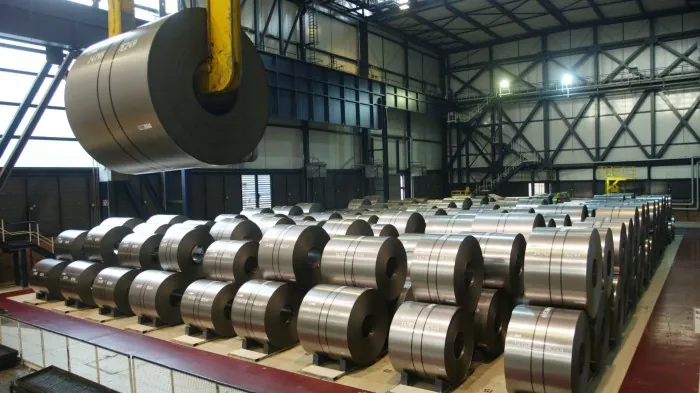
Trade Tensions Rise as Trump's Return Puts EU's Tariff Plans to the Test
2024-11-12
Author: Wei
Introduction
In the wake of Donald Trump's return to politics, a simmering trade dispute over steel has emerged as a significant challenge for the European Union (EU) as it navigates its relationship with the impending Trump administration. A senior U.S. official has suggested that the EU consider delaying its plans to impose billions in additional tariffs on American imports set for March 2025.
Background
The backdrop to this trade tension includes a fragile truce established under President Joe Biden, which had temporarily eased the conflict instigated by Trump’s 2018 decision to levy tariffs of 25% on steel and 10% on aluminum. However, both parties are expected to reinstate their tariffs against each other next year, with the EU planning to act by the end of March, and the U.S. following suit at the conclusion of 2025.
Statements from Officials
Rufino Hurtado, a senior trade representative at the U.S. mission to the EU, emphasized the urgency of the situation during a recent conference in Brussels. “The Commission really has to make a choice — March 2025 is not long after the inauguration,” he stated. He noted that the fate of these retaliatory tariffs rests entirely with the EU, highlighting the need for strategic decisions regarding the continuation or reimposition of duties.
Trump, in his renewed presidential campaign, has signaled intentions to introduce tariffs ranging from 10% to 20% on all imports from the EU, criticizing the trade imbalance and accusing the bloc of exporting more to the U.S. than it imports.
Negotiation Efforts
Under Biden's negotiation efforts, the previously imposed tariffs were replaced by a quota system, allowing for a more structured approach to U.S.-EU trade. The EU, in turn, had suspended its retaliatory tariffs on American products. However, Hurtado expressed concern that, despite a closer alignment on various issues, the EU has impeded progress during negotiations in recent years.
As part of discussions in 2021, the two sides agreed to form a 'green steel club' aimed at establishing environmental standards and reducing the influx of cheaper steel products from China that are produced using fossil fuels. However, progress has been limited. Hurtado criticized the stagnant negotiations, indicating that U.S. proposals have not aligned with European objectives.
The EU's Carbon Border Adjustment Mechanism
EU Trade Commissioner Valdis Dombrovskis stressed the importance of any proposed Arrangement on Sustainable Steel and Aluminum (GSA) complying with multilateral trade regulations, hinting that the U.S. plans may conflict with World Trade Organization (WTO) rules due to their preference for domestic producers.
In retaliation, the EU aims to implement its carbon border adjustment mechanism (CBAM), set to take effect in 2026, which will impose tariffs based on carbon emissions. This move could adversely affect U.S. steel producers, who currently lack a national carbon pricing framework.
Economic Implications
Additionally, EU manufacturers reportedly suffer losses of approximately $300 million annually due to U.S. export quotas established to mitigate disputes, adding pressure to the already strained trading relationship.
The looming threat of reimposed tariffs could have substantial implications. The EU is poised to apply tariffs on €4.8 billion worth of U.S. goods, including hefty tariffs of 50% on bourbon whiskey, Harley-Davidson motorcycles, and luxury motorboats, unless further negotiations yield a different outcome. Lower tariffs would also impact various imports, including certain agricultural products and playing cards.
Conclusion
A European official, opting to remain anonymous, conveyed hope for an amicable resolution, stating, 'We are aiming to find a solution to this issue. However, the situation feels unbalanced as our exporters are still liable for certain tariffs. We aim to resolve it in a manner that benefits both sides.'
The situation remains fluid, and as the clock ticks towards 2025, businesses and consumers alike are waiting anxiously to see how these trade dynamics will unfold. With tensions brewing and both sides standing firm, the potential for economic repercussions looms large, making this a pivotal moment for transatlantic trade relations.



 Brasil (PT)
Brasil (PT)
 Canada (EN)
Canada (EN)
 Chile (ES)
Chile (ES)
 España (ES)
España (ES)
 France (FR)
France (FR)
 Hong Kong (EN)
Hong Kong (EN)
 Italia (IT)
Italia (IT)
 日本 (JA)
日本 (JA)
 Magyarország (HU)
Magyarország (HU)
 Norge (NO)
Norge (NO)
 Polska (PL)
Polska (PL)
 Schweiz (DE)
Schweiz (DE)
 Singapore (EN)
Singapore (EN)
 Sverige (SV)
Sverige (SV)
 Suomi (FI)
Suomi (FI)
 Türkiye (TR)
Türkiye (TR)